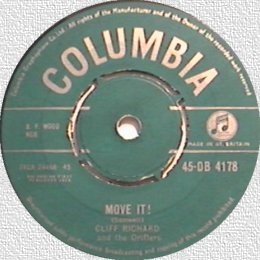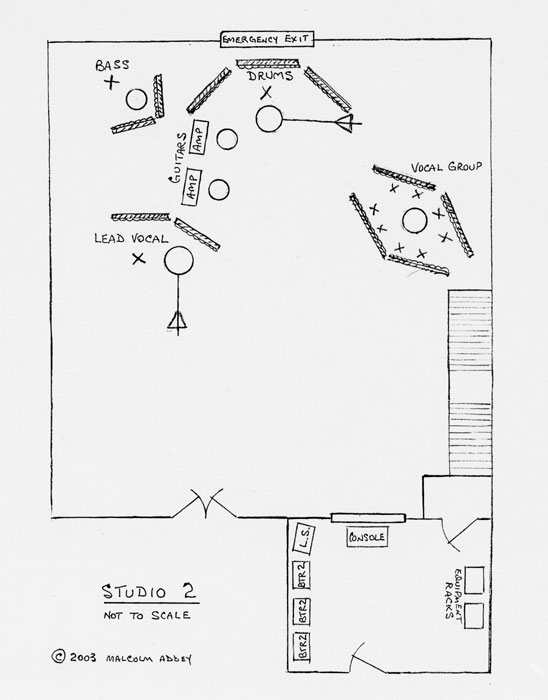| Notes and Quotes: "Move It" |
|
| Samwell (Foster 2000: 158): I was in the studio expecting to play the opening
riff, but Norrie said, "Ernie has a much better sound. Let him play
it," So I showed him how to do it.... At the time, I felt that in
the rest of the song, Ernie was playing Bill Haley licks, but in retrospect,
he did a heck of a good job.... Also, we felt that we didn't want a stand-up
bass player because that wasn't really rock 'n' roll anymore. It was time
to move on—electric bass was better, so I was initially very disappointed
when Norrie booked Frank Clarke on his enormous acoustic bass. But he
was a terrific guy, and he played beautifully, with great energy. |
| Addey (2001): They didn't have anybody who had the gumption…, nothing compared
to the other people. It seems that I was chosen to be the first one they
would give jobs to do. If we're sitting at the console. So Peter Bown
was given the job for this young kid who came along to record for Norrie
Paramour who was one of the producers. And [Bown's] a big, big opera fan,
and he had tickets for some opera he really wanted to see. And he really
couldn't stay, so he said, "Why can't Malcolm do it? Well, Norrie's
a bit nervous about this, but I can understand. He said, "OK. As
long as Peter gets him started and blah, blah, blah." So in the afternoon
Peter and I just planned our whole layout to give to the guys who set the
sessions up for us. So, he made it my session
which is kind of nice of Peter, he was always good that way. And he just
stood around for about 15 minutes he says, "Well," he said "you're
doing OK Malcolm. I'm off." This was, of course, "Move It."
… It's all well documented, that's how I started, and once you have
a hit, I mean, you don't go back to sweeping the floors after that. You
never did. |
|
| Many
describe "Move It" as Richard's only true rock recording.
Attempting to appeal to a broader audience, he and Paramor shaped
his later recordings to be much less driving and essential, expanding
on the complexity of the production. Malcolm Addey provided the
sonic environment that would become the signature sound of early
60s British pop. |
| The
verse is in two parts: an extended rhythmic sustain on I and IV and a
concluding section capped with repetitions of the hook. Blues musicians
like Muddy Waters use this type of pattern where the first part takes
the form of an extended narrative and the second, a refrain (e.g., "Rollin'
Stone"). In both the blues and British popular song, the form may have
developed from the tradition of the verse-chorus format of 19th-century
popular song. |
| You can see Cliff Richard and the Drifters (Hank Marvin, Bruce Welch, Jet Harris, and Tony Meeham) performing "Move It" in a television performance (probably Oh Boy!). YouTube |
|
| Schedule |
30 January, 2012
|

